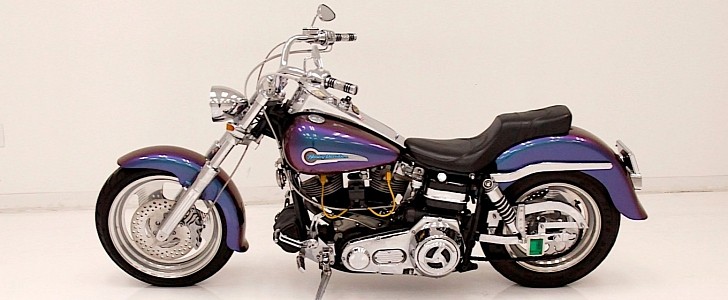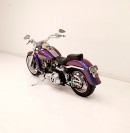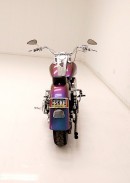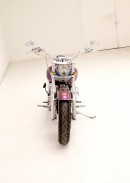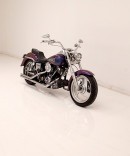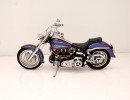Modern-day, customized Harley-Davidsons are all the rage in the minds of people in the market for buying one, but also of those who enjoy simply admiring a job well done. But there are times when bikes of old are just what the doctor prescribed.
After twelve months of showing you more or less extreme Breakouts, V-Rods, and Fat Boys, we think it’s best we sign off on 2021 with something cool from exactly half a century ago: a Harley-Davidson FLH, mildly customized and wrapped in all the colors of the world thanks to the Chameleon paint slapped onto it.
The FLH came to be in the 1950s, and in some respects continues to this day in the form of the modern Street Glide or Road Glide. It’s one of the longest and most successful breeds of Harleys, but not necessarily the top choice for customizers.
It was the FLH, more specifically the late 1960s Electra Glide, that is responsible for the rise of what we know today as the batwing fairing, first as an optional and removable piece of hardware with no instrumentation, and later as a part of the motorcycle, with instruments, and thus one that could not be removed.
The 1971 example we have here boasted the batwing when it rolled the factory lines, but its current, slightly custom shape makes do without it. And it doesn’t look half bad like this.
The Chameleon paint and the lack of fairing are backed in sending the custom message across by chromed handlebars rocking teardrop mirrors on their tips, a halogen lamp up front, and an Arlen Ness seat at the rear. The same shop supplied the handle grips.
The 80c engine sits in the frame works by means of a 4 -speed transmission, and the entire machine rests on a progressive suspension system.
We all know that generally speaking custom builds are very expensive, to the point they most of the time double the price of the base bike.
But whereas an unmodified FLH from 1971 generally sells for under $10,000, this one is listed by Classic Auto Mall with a price just a pinch over that, at $11,500.
The FLH came to be in the 1950s, and in some respects continues to this day in the form of the modern Street Glide or Road Glide. It’s one of the longest and most successful breeds of Harleys, but not necessarily the top choice for customizers.
It was the FLH, more specifically the late 1960s Electra Glide, that is responsible for the rise of what we know today as the batwing fairing, first as an optional and removable piece of hardware with no instrumentation, and later as a part of the motorcycle, with instruments, and thus one that could not be removed.
The 1971 example we have here boasted the batwing when it rolled the factory lines, but its current, slightly custom shape makes do without it. And it doesn’t look half bad like this.
The Chameleon paint and the lack of fairing are backed in sending the custom message across by chromed handlebars rocking teardrop mirrors on their tips, a halogen lamp up front, and an Arlen Ness seat at the rear. The same shop supplied the handle grips.
The 80c engine sits in the frame works by means of a 4 -speed transmission, and the entire machine rests on a progressive suspension system.
We all know that generally speaking custom builds are very expensive, to the point they most of the time double the price of the base bike.
But whereas an unmodified FLH from 1971 generally sells for under $10,000, this one is listed by Classic Auto Mall with a price just a pinch over that, at $11,500.
